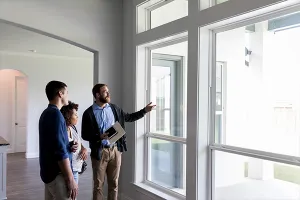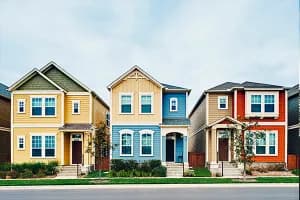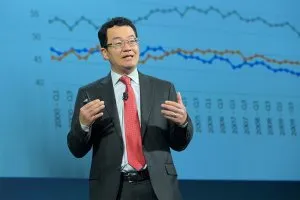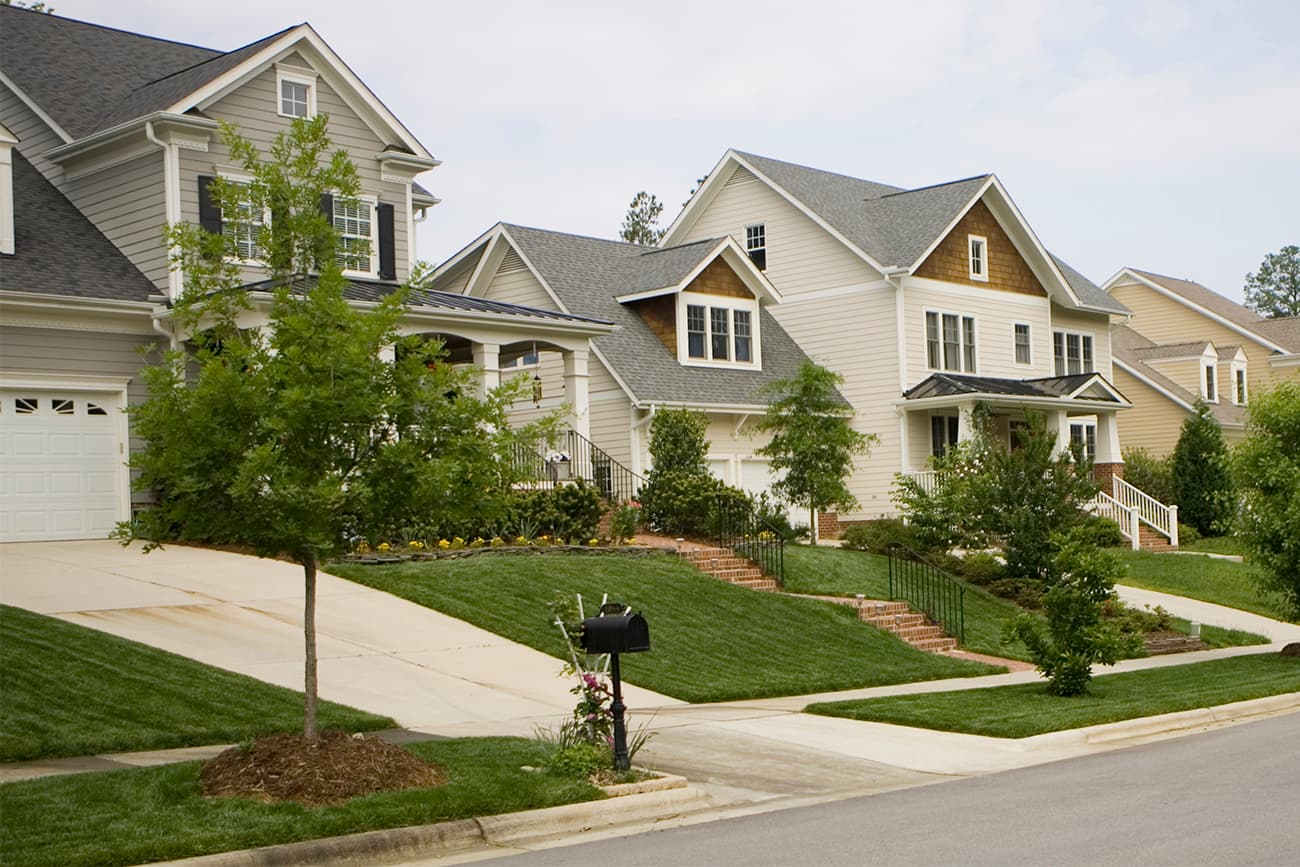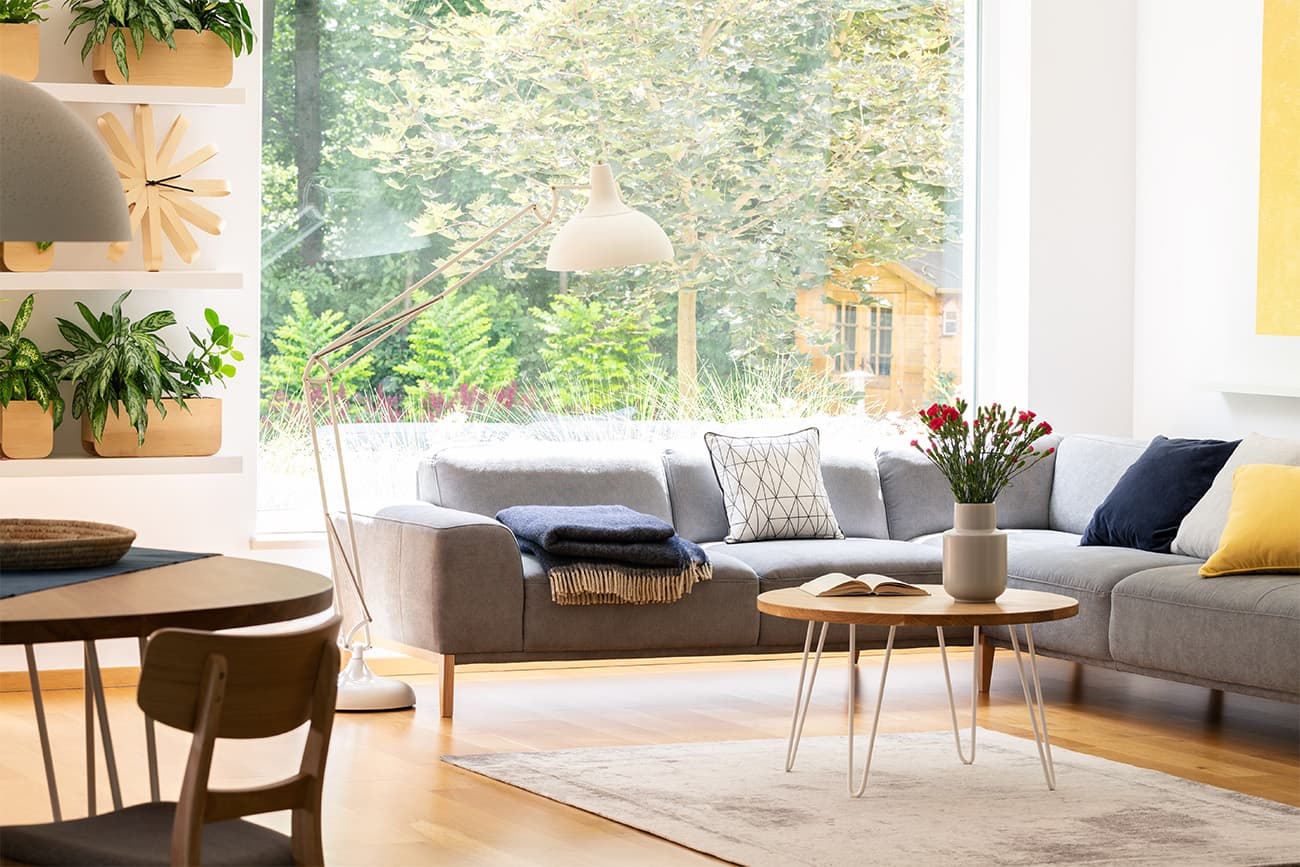While the real estate market offers many different types of houses, one style stands out: Single-family homes tend to dominate the market. The National Association of REALTORS®' Profile of Home Buyers and Sellers revealed that 75% of recent buyers chose single-family homes. In fact, most of the homes in the U.S. are single-family homes.
So, what are single-family homes, and why are they so popular? Let's dive into America's favorite home style and explore its features and challenges.
What Is a Single-Family Home?
A single-family home is a detached residence built on its own property. It may have one bedroom or many, but it usually has its own kitchen, bathrooms, and living areas. Some may have an attached garage, too. The key characteristics of a single-family home are:
- Freestanding structure (typically)
- Contains its own entrance, kitchen, bathroom(s), and living spaces
- Usually includes a private yard or garden
The U.S. Census Bureau also considers some attached homes like townhouses, duplexes, and row houses to be single-family homes, as long as residences are separated by ground-to-roof walls.
Features and Attributes
Single-family homes come in a variety of different architectural styles, such as ranch-style homes, bungalows, Tudor homes, Queen Anne-style homes, and more. But all single-family homes have a few common features:
- No shared property: A single-family home is self-contained with no shared land, walls, and spaces. They do not share utility systems or heating and AC systems with any other homes or units.
- Land: Single-family homes are built on their own land. They generally have their own private outdoor space (think of a front or back yard).
- Single owner: Unlike a condo building or a co-op, single-family homes are fully maintained by the owner. The owner is responsible for upkeep, zoning compliance, costs, and taxes related to the home.
- Rooms: Single-family homes can be large or small, but they usually include bedrooms, bathrooms, and common areas like a kitchen and living room, basement, attic, etc.
Benefits of Single-Family Homes
It's not a coincidence that so many Americans choose single-family homes. These residences offer many advantages that set them apart from other options:
- Privacy: Freestanding homes offer greater separation from neighbors compared to multifamily units.
- Customization: Residents can paint their home’s exterior an unusual color, add a second floor, change the windows and roof, or embrace new landscaping. Single-family homes enable creativity and customization that's not possible with townhouses or condominiums. If the house is part of an HOA (homeowners’ association), certain rules may apply.
- Space: Single-family homes also typically offer more space compared to other property types. Buyers can choose from different architectural styles, square footage options, and even yard sizes. That said, new builds in your area may reflect wider real estate trends.
Considerations
While single-family homes are the preferred option for most buyers, some additional considerations are involved when calculating the cost of the whole home.
- Upkeep costs: Single-family homeowners are on the hook for all maintenance costs associated with their home. They'll also pay property taxes and insurance premiums.
- Affordability: Single-family homes can be more expensive than co-op or condominium options in the same area.
- Amenities: Many condominiums offer access to shared amenities like pools and gyms. Single-family homes are less likely to offer these amenities. Homes that already have these upgrades can be pricey; however, some HOAs may offer access to shared amenities at a cost.
Differences From Other Property Types
Single-family homes are often the default option most aspiring homeowners consider when planning their home-buying journey. But exploring the similarities and differences between single-family and multifamily homes can help them make a more informed decision.
Single-Family Home vs. Multifamily Home
A multifamily home is a residential property with more than one unit. Duplexes, triplexes, and quadplexes are all examples of multifamily homes. Single-family homes have no shared walls or spaces, but multifamily homes put residents in close proximity to neighbors. Townhouse or duplex residents may have shared walls, HVAC fixtures, plumbing, etc.
Single-family homes are usually more expensive to purchase compared to a single unit in a multifamily home, but both types of properties can be financed with a conventional mortgage. Multifamily homes are also common as investments. The owner may live in one unit and rent out the rest.
Takeaway: A single-family home maximizes privacy and freedom, but a multifamily home in the same locality may be more affordable.
Single-Family Home vs. Condominium
Condos are like multifamily homes in that all the units are part of the same building and may have shared amenities. Condos are usually smaller than most single-family homes, making them a lot more affordable. Since condos are usually part of an HOA or co-op, residents pay HOA fees while the HOA maintains common areas and landscaping, as well as the building's exterior. With single-family homes, the owner bears sole responsibility for all these factors.
Takeaway: Condos don’t have major maintenance concerns or costs, but they lack the privacy and customization options of single-family homes.
Market Considerations
Like other types of real estate, single-family home sales are subject to changes in the current economy and market.
Single-Family Home Trends
As the U.S. population continues to grow, there's an increase in the demand for single-family homes. However, many newly constructed single-family homes may be built-to-rent. These homes provide an affordable housing alternative to families seeking more space, but they're unlikely to affect the inventory shortage in the housing market. Meanwhile, workers who have ditched their daily commute for remote work are moving out to the suburbs. NAR's Migration Trends report revealed that 41% of real estate agents’ recent clients had moved from a central city or urban area to the suburbs.
There's also an emerging trend towards smaller single-family homes. A major reason for the popularity of smaller properties? Cost. Less square footage means a lower price point. In a tough real estate market, many buyers may be willing to compromise on extra space to become homeowners.
Experts also suggest that the preference for less square footage may be rooted in a change in what households look like. 2020 census data suggests that more than a quarter of all occupied households in the U.S. were single-person households. Single home buyers may simply not need the space.
Changing demographics have affected the U.S. housing market in other ways too. Economists suggest that housing supply has not kept with demand. However, this isn't because of population growth, but because people live longer, and the supply of housing has fallen short of the demand from older Americans. This demand and supply problem may be another factor driving up the costs of single-family homes.
Investment Considerations
Single-family homes can be a good option for people getting started on their real estate investment journey. But it's important for potential investors to look at the big picture and plan their purchase based on a few key factors.
- Cost vs rent: A single-family home is a cheaper investment compared to a multifamily residential building with four to five units. However, every time a tenant leaves a single-family home, the owner loses all rental income until they find another. Losing a single tenant is less impactful when you own and rent out multiple units.
- Maintenance: A single-family home can be a good investment for those who plan to manage the property and deal with the tenants themselves. With multiple units, a property manager may make more sense.
- Optionality: There are many ways to make a profit on a single-family home. It can be a long-term rental, a vacation rental (that doubles as your own holiday home), a project that you can renovate and resell, or simply an asset that you hold for a while till it appreciates in value.
Legal and Zoning Considerations
Along with changes in the market, real estate professionals should understand how legal and zoning factors influence the sales of single-family homes.
Zoning
Zoning regulations are municipal rules or laws that dictate how property can or can't be used. Single-family zoning in certain areas means that only single-family detached homes can be built in those areas. However, increasing zoning reform may transform American suburbs. Single-family homes will most likely remain a mainstay, but some states and cities may reform their zoning policies to allow for more multifamily housing. Additionally, plans to use single-family homes for short-term rentals may be affected by zoning policies in some areas, as local towns and cities may either limit these kinds of rentals or ban them entirely.
Do HOAs Affect Single-Family Homes?
While surveys suggest that Americans have a negative perception of HOAs, in practice, around one in five Americans live in HOA-governed communities. Most people fear overregulation, but with HOAs booming, many new buyers will likely end up in HOA-governed neighborhoods. However, HOA reform movements are gathering steam and may limit the authority that these associations have in the future. HOAs are less likely to affect a buyer’s interest in single-family homes since the alternative (a unit in a multifamily home) is even more likely to be part of an HOA or co-op.
New Trends in Single-Family Homes
Expectations for single-family homes continue to change. Here are some recent trends real estate professionals can expect to see.
- Focus on sustainability: Expect an emphasis on energy, efficiency, resource-efficient construction methods, sustainable materials, and water conservation. Just last year, 45% of REALTORS® surveyed stated that their clients were interested in sustainability. Windows, doors, siding, and comfortable living spaces emerged as some of the key priorities for buyers.
- Smart home technology: Buyers want smart tech in their homes, but only if it maximizes convenience and efficiency. Expect a demand for homes with smart energy management systems, water conservation enhancements, and security.
- Wellness-oriented elements: Interest in health and wellness concepts is alive and well. Buyers may express interest in natural light, nontoxic materials, air filtration, and other wellness-focused features like Circadian lighting systems.
- Accessible features: Older buyers and buyers with a long-term focus may be seeking homes that remain equally accessible in old age. This may also be a concern for people with disabilities. Wide doorways, step-free entrances, fewer hallways, and curb-less showers may be some of the features buyers seek.
Single-Family Homes: The Bottom Line
Single-family homes remain a cornerstone of the real estate market, offering privacy, space, and long-term investment potential for buyers. Their appeal continues to evolve with shifting market trends, economic factors, and buyer preferences. Real estate professionals can play a vital role in guiding clients through the buying and selling process and ensuring informed decisions. Staying up to date on market trends, zoning regulations, and financing options is important to effectively navigate the market.
